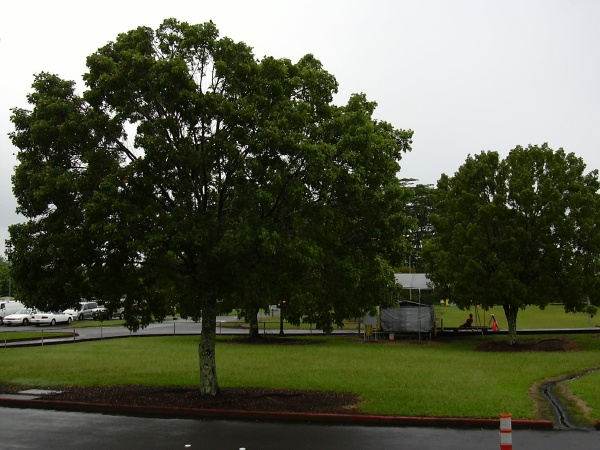
West Indies Mahogany: Habitat
This is one of the most popular shade trees
in urban areas of southern Florida, and is a component of
natural forests of areas such as the Everglades and the Florida Keys. It is the only large meliaceous tree that is common in Florida.
S. mahogani also
occurs in the West Indies, Bahamas and South Florida. Mahogany
formerly extended further north in Florida, but it has been cut
to extinction. A valuable lumber tree, mahogany has been rapidly
disappearing from the natural tropical forests due to intensive
commercialization of this species 6.
S. mahagoni thrives in subtropical areas where temperatures
ranging from 16 to 32 deg. C and there is a moderate amount of
rainfall varying from 1250 to 2500 mm. Organisms with a habitat
similar to the mahogany include the
Stone breakers,
Sweet Orange,
Hot
peppers ,
Kiss-me-quick , and
Curare.
the Everglades and the Florida Keys. It is the only large meliaceous tree that is common in Florida.
S. mahogani also
occurs in the West Indies, Bahamas and South Florida. Mahogany
formerly extended further north in Florida, but it has been cut
to extinction. A valuable lumber tree, mahogany has been rapidly
disappearing from the natural tropical forests due to intensive
commercialization of this species 6.
S. mahagoni thrives in subtropical areas where temperatures
ranging from 16 to 32 deg. C and there is a moderate amount of
rainfall varying from 1250 to 2500 mm. Organisms with a habitat
similar to the mahogany include the
Stone breakers,
Sweet Orange,
Hot
peppers ,
Kiss-me-quick , and
Curare.
The mahogany tree thrives in moist soils and varies in its texture and grain according to the nature of the soil. The wood of trees of low and richer lands tend to be more porous and paler in color to that of those in rocky soil whose grain is very hard and beautifully shaded. Since it has been commercially sought after, the tree only exists in places of difficult access. Once covering the low lands of Jamaica and other Caribbean islands, it is now only found in the hills.
Habitat Dangers
 Apart
from over-commercialization by humans, soil
erosion, hurricane damage and shoot borer attack2 are
main concerns for the West Indies Mahogany tree as far as environmental damages go. Enrichment planting has been used for regenerating tropical
forests, mostly for commercial use, but has not been found to be an
effective source in regenerating these valuable trees.
Apart
from over-commercialization by humans, soil
erosion, hurricane damage and shoot borer attack2 are
main concerns for the West Indies Mahogany tree as far as environmental damages go. Enrichment planting has been used for regenerating tropical
forests, mostly for commercial use, but has not been found to be an
effective source in regenerating these valuable trees.